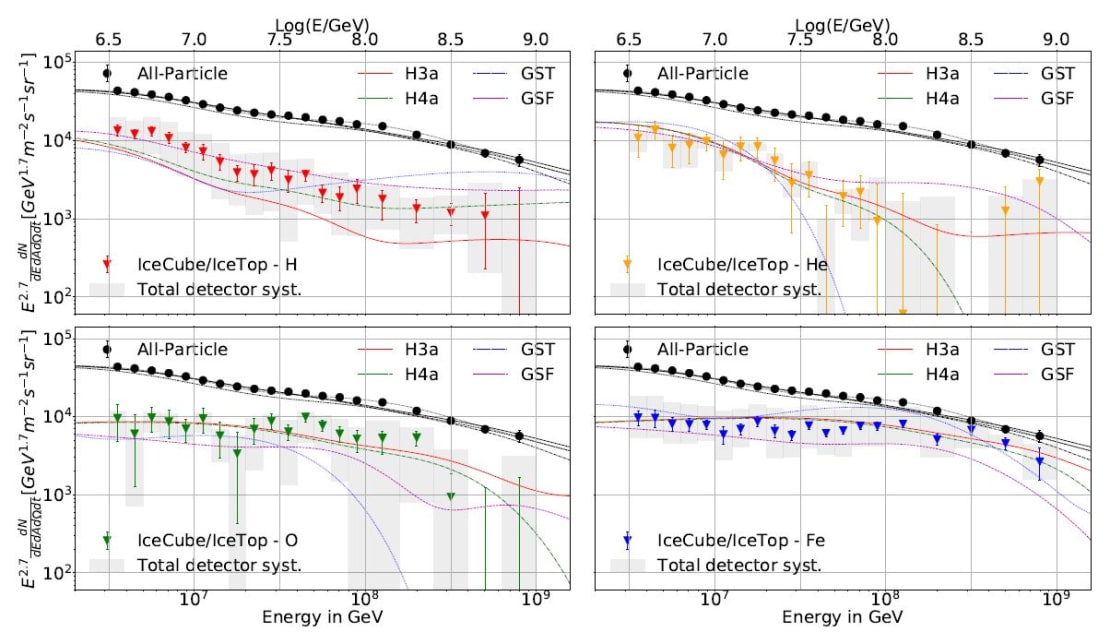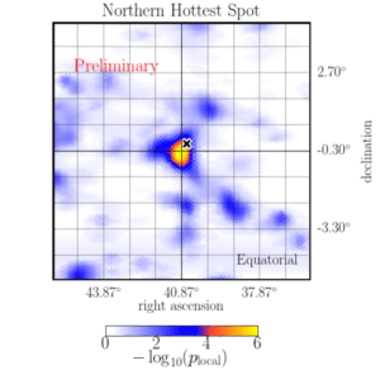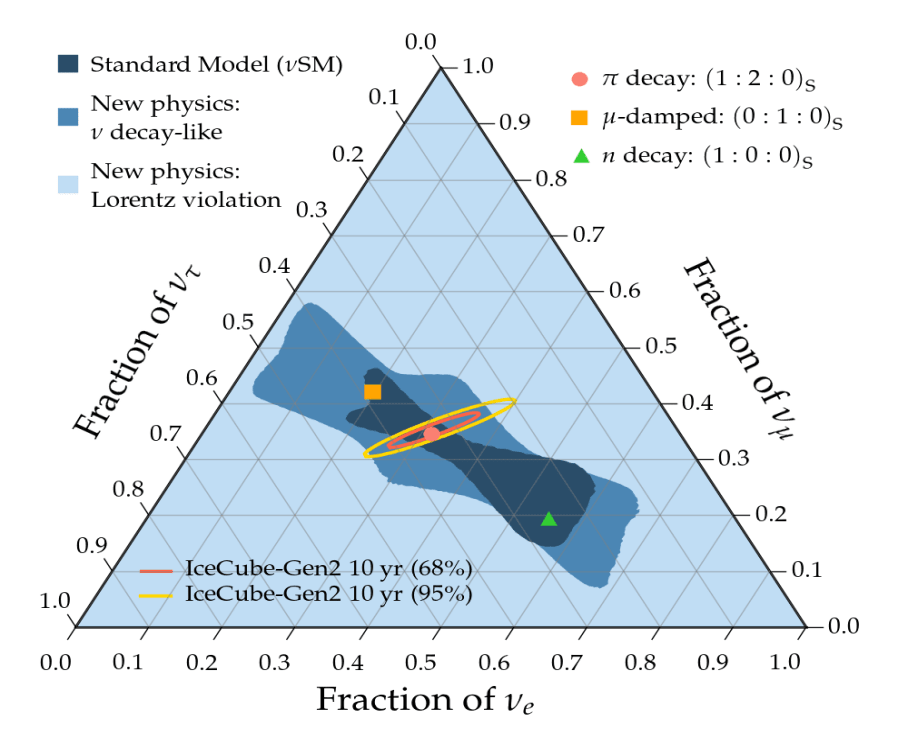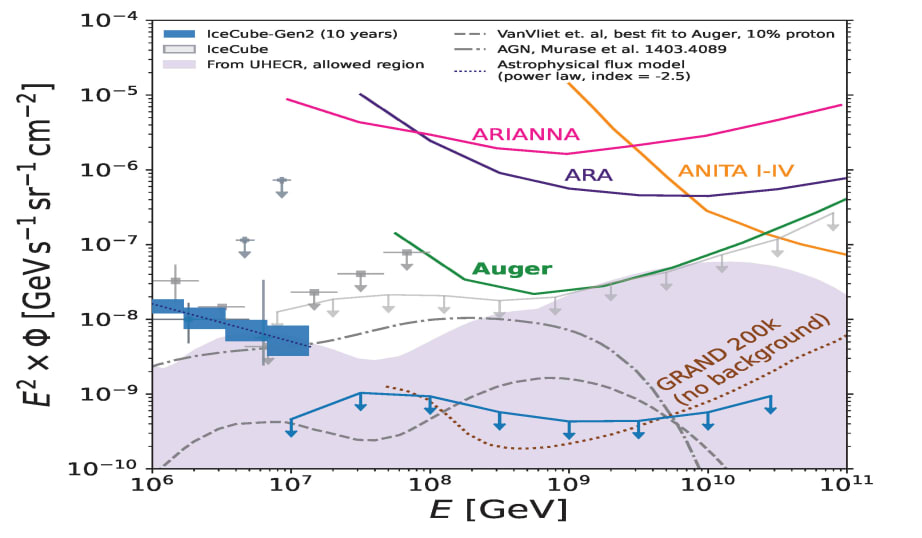The 36th International Cosmic Ray Conference finished up last week at the University of Wisconsin–Madison. From July 24 to August 1, over 800 cosmic ray physicists gathered at the Memorial Union on Lake Mendota to discuss the latest in cosmic ray research.
The IceCube Collaboration had a large presence at this ICRC because UW–Madison is the home institution for IceCube’s headquarters, the Wisconsin IceCube Particle Astrophysics Center (WIPAC). There were 82 IceCube contributions at this year’s meeting: two highlight talks, 36 parallel talks, and 43 posters. Here are some highlights from IceCube talks.
During the highlight session on Saturday, July 27, Dennis Soldin from the University of Delaware presented recent results of cosmic ray measurements from IceCube and IceTop data (proceedings). The IceTop surface array consists of 81 stations holding 162 ice Cherenkov tanks, each containing two DOMs. IceTop and IceCube together make a unique detector for cosmic rays because of their large statistics and ability to do three-dimensional track reconstruction of cosmic ray events. Soldin described a number of analyses that have used recent data from IceCube and IceTop, including a measurement of the cosmic ray energy and mass spectrum, conducting all-sky studies of the cosmic ray anisotropy in collaboration with the HAWC observatory, and determining the GeV muon content of cosmic ray air showers. Lastly, Soldin presented plans to expand the IceTop detector by deploying additional scintillators and radio antennae.

Later on Saturday, Tessa Carver, a graduate student at the University of Geneva in Switzerland, presented a parallel talk about her all-sky point source search using 10 years of IceCube data (proceedings). Carver and her collaborators scanned across the entire sky looking for the positions in each hemisphere with the highest estimated chances of containing an astrophysical neutrino signal—the hottest points. In order to be sensitive to weaker sources, they also did a separate analysis examining a catalog of 110 galactic and extragalactic source candidates for a possible astrophysical neutrino source. This analysis yielded no new steady-state neutrino sources; however, one of the most significant sources turned out to be TXS 0506-056, the blazar that IceCube found to be coincident with a gamma ray flare in 2017. The most significant source in the catalog was galaxy NGC 1068, which was offset by just 0.35 degrees from the hottest point in the sky. Carver said these results demonstrate a strong motivation to continue to analyze the objects in these point source catalogs.

Dawn Williams of the University of Alabama gave a highlight talk on Monday, July 29, about recent results from IceCube in neutrino astronomy and multimessenger astronomy (proceedings). Since ICRC 2017, IceCube has updated its samples of astrophysical neutrinos, including adding a new double cascade identifier that resulted in our first tau neutrino candidate. Williams also reviewed previous and ongoing point source searches, and she discussed our real-time alerts and our follow-ups of external triggers, including a timely gravitational wave event from the day before: S190728q. Finally, Williams touched on searches for dark matter as well as IceCube’s future with the IceCube Upgrade and IceCube-Gen2.

Aya Ishihara of Chiba University in Japan dove into more detail on the IceCube Upgrade’s design and science goals later on Monday during a parallel talk (proceedings). The Upgrade array geometry, she explained, is optimized for detecting GeV neutrinos and calibration of the IceCube detector. The Upgrade area will be densely instrumented with improved optical sensors, resulting in a more than 10 times more effective photocathode area-per-volume compared to now. This will lead to improved reconstruction capabilities, more events, and world-leading sensitivity to neutrino oscillations. The improved calibration of optical ice properties will reduce systematic uncertainties in reconstruction and astrophysical neutrino analysis. In addition, the Upgrade is an important R&D opportunity for the anticipated IceCube-Gen2 facility.

On Tuesday, July 30, there were many IceCube talks during parallel sessions. In one, UW–Madison graduate student Raamis Hussain discussed his team’s search for IceCube neutrinos from gravitational wave events (proceedings). They used data from all 33 gravitational wave events detected by the LIGO-Virgo Collaboration to date and looked for correlation with neutrinos from IceCube. No significant neutrino correlation was found, including for the S190728q event from Sunday, July 28. (In that case, neutrino follow-up resulted in the most significant p-value of all events to date, but it was not significant enough to suggest a correlation.) The team is planning another analysis to search for neutrino emission on longer timescales, which could be useful if, for example, neutrino emission occurs during the kilonova phase of a binary neutron star merger.

Finally, two IceCube collaborators gave rapporteur talks on the last day of the conference, Thursday, August 1. Frank Schröder of the Karlsruhe Institute of Technology discussed research on indirect cosmic ray studies and Alexander Kappes of Universität Münster summarized neutrino research.
In addition to the many talks and posters, IceCube collaborators also received awards at this year’s ICRC. During the opening session on Thursday, July 25, IceCube PI Francis Halzen of UW–Madison was awarded the 2019 Yodh Prize. Halzen also gave a review talk about the history of neutrino physics and summarized IceCube’s findings and future directions on Friday. At the closing session on Thursday, August 1, Gwen DeWasseige of Laboratoire APC and CNRS Universite Paris-Diderot won a poster award for her poster “First search for GeV neutrinos from bright gamma-ray solar flares using the IceCube Neutrino Observatory.”
ICRC is organized biennially by the Commission on Astroparticle Physics (C4), established in 1947, of the International Union of Pure and Applied Physics (IUPAP). Planning is already underway for the 37th International Cosmic Ray Conference, which will take place from July 15 – 22, 2021, in Berlin, Germany.



